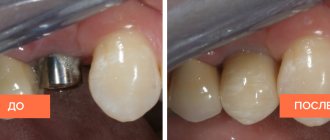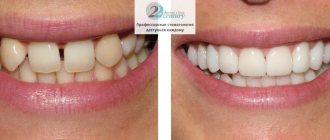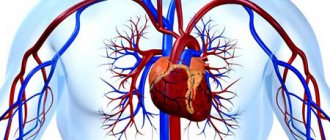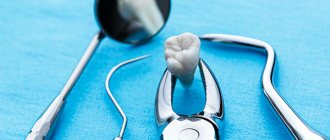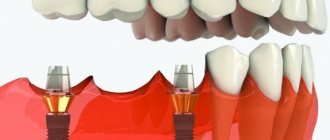Problem: a young man came to the Dial-Dent clinic with serious problems with his chewing teeth. The 2 lower teeth were severely damaged and could not be restored. The patient visited several clinics for consultations, and everywhere he was recommended to have these teeth removed.
Decision: chief physician of Dial-Dent S.V. Zukor recommends a modern method of restoring lost teeth - implantation.
The patient attended consultations at several dental centers and in all medical institutions the doctors agreed on one thing - the teeth cannot be restored and they must be removed. As can be seen on x-rays, the teeth are severely damaged and cannot be restored.
In one clinic, it was proposed to replace extracted teeth with a traditional bridge supported by crowns. This method of restoration involves grinding four healthy teeth adjacent to the missing ones (two on each side). The patient decided that this method was not suitable for him due to the violation of the integrity of healthy teeth. Another method offered to a patient in one of the Moscow dental clinics is a bridge-like prosthesis supported by inlays or micro-locks. This microinvasive method of prosthetics has many advantages over conventional prosthetics, however, the service life of such prostheses with micro-locks is 5-10 years. The patient wanted a longer service life and therefore turned to the Dial-Dent clinic, where, along with the two above methods, the patient was offered the most modern, microinvasive and reliable method of prosthetics with a long service life - dental implantation.
How new dental implants are made and inserted if they cannot be placed without bone grafting
Dental plastic surgery involves increasing the volume of soft tissue on the gums when they are not enough. There are two ways to do this:
- Immediately transplant soft tissue if there are no contraindications during surgery.
- Natural growing and dividing the surgical procedure into two parts a few months apart.
This formation is necessary to give the jaw an attractive appearance and adjust the future smile accordingly. This issue becomes especially relevant when it comes to the front incisors, which are always in sight.
Methods for restoring tooth enamel
The essence of the main methods for restoring tooth enamel comes down to filling damaged areas with special materials.
| Recovery method | What is |
| Remineralization | In order to compensate for the lack of mineral substances, fluoridation of teeth with fluoride-containing varnish or gel is used. Thanks to the use of these products, the enamel becomes stronger and becomes resistant to adverse external factors. |
| Special substances | As a result of treating damaged areas of enamel with amorphous calcium phosphate, the tooth surface becomes smooth and compacted, the sensitivity of the enamel decreases, and aesthetic imperfections disappear. This method has a fairly long-lasting effect. |
| Filling materials | By gradually applying thin layers of filling materials, damaged enamel is restored. This method is necessary, first of all, to restore the aesthetic function of the front teeth and allows the results to be maintained for a long time. |
| Implantation | This method is used when it is necessary to restore large areas of tooth enamel with very severe damage. Using a special material similar in composition and properties to tooth tissue, enamel is built up and restored at the molecular level. |
| Home Remedies | Effective only at the initial stage of destruction. Using toothpastes high in fluoride and other minerals. While brushing your teeth, you should leave the paste on your teeth for a while. In addition, regular massage of the gums, which increases blood circulation and ensures the flow of nutrients, will help prevent the destruction of enamel. And of course, a balanced diet with foods high in calcium and vitamin D, which will help calcium to be better absorbed. |
Calculation of dental implants for implantation: how they fit in
For each specific case, the doctor determines the amount individually. It depends on the structural features of the oral cavity, the volume of soft tissues, and other indications. Please note that only a qualified specialist can correctly calculate the chewing load.
The general practice is to start with ten pins in each jaw if the patient is completely edentulous. If the installation position is correctly calculated, a good result can be obtained using six or eight support elements.
Installing many implants is expensive. Therefore, people with limited income strive to reduce their number. A properly made prosthesis will distribute the load evenly. But, in this matter, it is recommended to exercise healthy wisdom and choose the best option, based on the recommendations of a specialist.
The next question that is often asked in the dentist’s chair is: what material should the pin be made of? There are many elements used in this field, therefore, only a qualified specialist can determine the appropriate ones based on contraindications.
A competent doctor will offer several options to choose from that can solve the problem, so that the patient can independently choose the one that is suitable for the price.
Feelings during surgery
Installing 1 implant feels like removing one tooth. Doctors make this comparison when patients ask them what to expect from dental implant surgery. In most cases, artificial roots are implanted under local anesthesia. But patients who begin to worry even before the operation begin are sedated with local anesthesia. This is not a painkiller, but a sedative, relieves stress, anxiety, and increases the pain threshold. The patient remains conscious, but in a state close to deep sleep. Painful impulses are blocked, fear and anxiety go away, while the contact between the patient and the doctor is maintained. After sedation, there are no memories of the operation, neither good nor bad.
Severe fear, particularly complex treatment, complex dental implantation - in these cases the patient can be put to sleep using anesthesia. He falls asleep with a toothless mouth and wakes up with teeth.
How is rehabilitation going: what to do
The postoperative period is always accompanied by recovery measures that promote a speedy recovery.
In the first days, it is not recommended to even rinse your mouth. This will wash away the blood molecules that are responsible for wound healing. To maintain hygiene, you can gently clean, including the temporary crown. For this, soft brushes are used, and movements should be very smooth and careful. It is better to choose a paste with antiseptic additives.
Sauna, solarium, bathhouse, heavy lifting and excessive stress are completely contraindicated during this period. The appearance of any, even the most fleeting, unpleasant sensations indicates the need to see a dentist.
Is implantation technology right for you?
Dentists at the Presidential clinics take a responsible approach to various operations, including implantation. Our main goal is to achieve a completely flawless, comfortable and aesthetic result for the patient, which will serve as an exact copy of a natural tooth. We carry out implantation when we are one hundred percent sure of the effectiveness of the result.
Before the operation, the patient is consulted and a contract is drawn up. This stage is focused on a correct assessment of the prospects and the very possibility of implantation in each specific case.
During the consultation, the specialist carefully examines the condition of existing teeth and gums, assesses the density and volume of bone tissue. For accurate results, radiography is used, which displays the features of the bone structure in the place where dental elements will be installed.
Only based on the results of the examination, the specialist decides:
- is it possible to carry out implantation;
- what procedures need to be carried out before surgery;
- how long will the entire procedure last?
- total cost of services provided.
In various situations, dental implantation can be done only after augmentation of jaw bone tissue, gum tissue grafting or sinus lifting. Such operations in dental clinics are performed by specialized employees, and their cost is negotiated immediately after the consultation.
Also, in specific situations, you can do alternative implantation, which uses mini-implants made of titanium. Our dental network will try to do everything possible to return you to a healthy smile and your old lifestyle, freeing you from the problems associated with insufficient natural dentition.
Indications and contraindications
Bone tissue is formed in girls up to eighteen years old, and in boys up to twenty-one years old. Therefore, the installation of pins during this period is strictly prohibited. There is no upper age limit for the procedure.
In case of blood clotting disorders, as well as regeneration of soft and hard tissues, this surgical intervention can become critical for life. People with an unbalanced psyche or pregnant women are also not allowed to undergo the procedure.
In other cases, nothing limits the patient. However, it should be remembered: this manipulation must be performed by a qualified specialist after a mandatory preliminary examination.
Indications for use are:
- complete or partial loss of supporting elements of the jaw, on which removable dentures can be attached;
- allergic reactions to materials;
- inability to use alternative options for other reasons.
Why is tooth enamel destroyed?
More than 95% of tooth enamel consists of minerals, the main ones being calcium (35%) and phosphorus (17%). The rest is water.
The natural internal environment of the human oral cavity is alkaline, so for the health of tooth enamel it is important to maintain a normal alkaline balance in the mouth.
There are many factors that exacerbate the ability of enamel to be destroyed by bacteria.
- The special structure of the teeth, when a large amount of food remains in the recesses and spaces;
- Poor oral hygiene, improper brushing of teeth;
- Lack of vitamins and minerals in the body;
- Weak immunity, the presence of various diseases;
- Insufficient amount of fluoride in enamel;
- Eating large amounts of soft food;
- Hereditary predisposition;
- Incorrect composition of saliva (low viscosity, which contributes to the accumulation of bacteria and the appearance of plaque);
- The bristles of the toothbrush are too hard;
- Eating a large number of citrus fruits, the acid of which weakens the enamel;
- Smoking in large quantities.
In addition, the destruction of enamel can be a consequence of age-related changes in the body; as a rule, people over the age of 50 suffer from this.
Pregnant women also very often complain about the destruction of enamel, which occurs due to changes occurring in the body.
There are many curious cases of damage to tooth enamel, for example, when trying to crack a nut or open a glass bottle. Such situations can lead not only to the destruction of enamel, but also to tooth chipping or loss.
A natural consequence of damaged enamel is the formation of caries and further tooth destruction. Unfortunately, tooth enamel does not have the ability to regenerate, so it can only be restored in the dentist’s office.
Life time
Initially unlimited. This means titanium rods can last a lifetime. Only the crown will be subject to periodic replacement. In order to reduce the cost, manufacturers come up with various materials in both directions: increasing, as well as decreasing, quality and cost.
The accuracy of the work done is an additional factor affecting the life of the pin. The distribution of chewing load, position in space, bite, normal jaw pressure and other factors that directly affect the service life depend on the correctness of the calculations.
Which option to choose depends on financial capabilities and specific recommendations of the doctor. You should always remember that the durability of any product depends on its care. If you take good care of the implant, following all the dentist’s recommendations, the pin will last a long time.
An implicit but important parameter influencing this indicator is cost. High-quality materials will cost more. However, strong components at the heart of such products are the key to long-term use and a quiet life.
The article discussed in detail the question: how a dental implant is inserted and screwed in, indications for having it implanted, types of operations with detailed explanations of their stages.
Anatomical features of the upper jaw
The maxillary bone is paired; it is part of the skull, therefore it is always motionless. The main chewing load goes to the lower jaw, which is attached to the skull with the help of the temporomandibular joint (TMJ). Due to the lack of high load, the bone tissue of the upper jaw is less dense and voluminous with a low alveolar ridge. This is a porous bone, so the implant (artificial root) takes longer to take root in it than in the lower jaw.
The upper jaw bone is considered airy, since inside it there is a cavity - the maxillary or maxillary sinus, which opens into the nasal cavity. The presence of a maxillary sinus creates an additional difficulty during implantation, since the artificial root can easily penetrate the sinus. The maxillary bone borders the nasal and orbital cavities, has 4 surfaces (anterior, infratemporal, nasal and orbital) and 4 processes (alveolar, palatine, zygomatic, frontal). The implant surgeon has to take into account all the features of its structure. The blood supply to the maxillary bone is carried out by branches of the alveolar artery, and innervation by the middle branch of the trigeminal nerve.
Structure of the upper jaw
Autotransplantation (autologous transplantation)
Another type of bone grafting performed before implantation. It is essentially a self-transplant since the recipient is his own donor. A similar technique is used for extensive burns, when areas of the patient’s healthy skin are transferred to the burned areas.
A similar technology is widely used by implantologists. During surgery, bone blocks taken from the patient are implanted into the jaw bone. The recovery period after installing implants using autologous transplantation is quite long and can last up to six months.
Implantation of implant roots is possible after completion of osseointegration, after 6 months. The asking price is at least 50,000 rubles.
Average cost in Moscow
| Name of service | Cost, rub. |
| Classical implantation of a single tooth “turnkey” with fixation | |
| Metal-ceramic crown | 39100 |
| All-ceramic crown | 50200 |
| Ceramic crowns on a special alloy | 60000 |
| Turnkey implantation of a single tooth using an express method with installation | |
| Metal-ceramic crown | 58000 |
| Implantation in complete absence of teeth | |
| Prosthetics on 4 implants | 350000 |
| Prosthetics on 6 implants | 450000 |
| Implantation of 14 implants, preliminary bone grafting, installation of crowns | from 900000 |
Comments
Please tell me how enamel implantation differs from procedures such as remineralization or fluoridation?
Alena (03/08/2020 at 02:25) Reply to comment
- Dear Alena! Remineralization and fluoridation are more aimed at strengthening the protective properties of the enamel so that it can resist carious bacteria. As for enamel implantation, as the creator of this technique assures, it promotes tissue regeneration, after which their healthy color, shine and structure are restored.
Editorial staff of the portal UltraSmile.ru (03/15/2020 at 09:07) Reply to comment
Are there other drugs for enamel implantation besides innoDent? Are they used in Russia? What is the difference? In which countries does enamel implantation have a long history?
Anna (05/23/2021 at 01:06 pm) Reply to comment
Write your comment Cancel reply
Nutrition rules
The main requirement is a minimum load on the implants both on the first day and in the next 2-3 days. The following nutritional rules must be followed:
General rules for what you can eat and drink
- refuse food during the first three hours,
- after 3 hours you can eat: give preference to soft and warm foods (warm soups, yoghurts are ideal),
- over the next three days, hot and cold food, drinks,
- eliminate spicy and sour foods from your diet,
- It is necessary to chew food on the side of the dentition where there are no sutures,
- your diet should be varied - make sure the foods you eat contain all the essential nutrients, especially calcium,
- you cannot drink alcoholic beverages or smoke,
- It is not advisable to drink coffee and black tea; it is better to give preference to herbal tea or dried fruit/fruit compote,
- Do not consume solid foods, excessively cold or hot drinks,
- It is important to drink as much water as possible (up to 1.5-2 liters).
Don’t give up meals – gradually introduce all foods into your diet. Remember that your body needs strength and energy to recover. The diet should be of high quality and as healthy as possible.
Sample menu - what should be the diet in the first 2-3 days after surgery
- soft cottage cheese, various yoghurts, you can buy baby food in jars - give preference to meat products and vegetables. In the first 2 days, if you do not receive dentures immediately, your diet will consist exclusively of liquid and puree foods,
- make yourself some broth. This can also be a regular soup, but it is better to use a blender before using it. On the first day, you can afford mashed boiled vegetables. All food should be warm - neither hot nor cold,
- For drinking, water is a priority, but you can indulge in warm herbal tea, especially one that acts on the nervous system as a sedative. Be sure to buy a straw - if you need stitches, you're better off eating this way.
